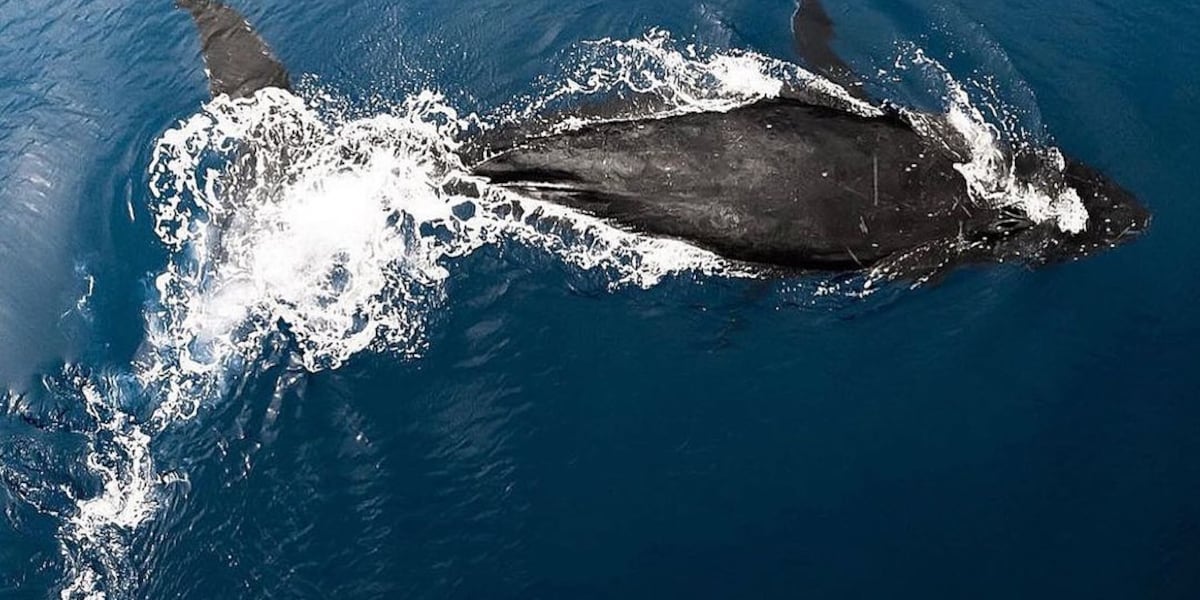Catching the tail end of humpback whale watching season in Hawaii
You still have time to catch a glimpse of humpback whales in Hawaii before they head back to Alaska. Hawaii News Now has caught the tail end of humpback whale watching season in Hawaii, with a tour from Deep Blue Eco Tours taking place on the North Shore of Oahu's North Shore. The season, which runs from November through May, sees an estimated 10,000 humpback whales migrate 3,000 miles from Alaska to the Hawaiian Islands to mate and give birth. Experts say this season has been particularly active, with tours spotting whales about 80 per cent of the time. The tours also teach public about communication and the art of breaching among whales. The tour also teaches about the importance of protecting the ocean and marine life.

Published : a month ago by Lili Hurd, Annalisa Burgos in Science
HONOLULU (HawaiiNewsNow) - You still have time to catch a glimpse of humpback whales in Hawaii before they head back to Alaska.
Hawaii News Now ventured out to Oahu’s North Shore in search of the majestic creatures with Deep Blue Eco Tours.
Whale watching season in Hawaii runs from November through May, with its peak between January and March. At least an estimated 10,000 humpback whales migrate 3,000 miles from Alaska to the warm, shallow waters of the Hawaiian Islands to mate and give birth.
Within minutes of leaving the dock at Haleiwa, our group spot a mother and baby humpback whale.
Our captain tells us it’s rare to see them so close to shore so it was a pleasant surprise.
Experts say this season has been especially active — with tours spotting whales about 80 pecent of the time — an opportunity to educate the public about these gentle giants.
”Our mission is to connect people with the ocean and the marine life around it because once they have the connection they have the motivation to take care of it,” said marine biologist Calvin Morse.
Morse estimates the calf we see is about a month old. Over the course of an hour, we see the pair breach over and over, junior mimicking mom’s movements.
Whale watching tours give the public a chance to watch the playful antics of calves with their mothers up close, crucial for teaching communication and the art of breaching.
We don’t see other whales nearby, but Morse tells us whales often travel in groups called pods, which can range from a couple whales to as many as 30.
Each pod has its own dialect — a variety of clicks, whistles, and pulsed calls to communicate and socialize with each other.
We are invited to listen to whale singing on a hydrophone system.
Whales also use their tails and fins to make loud slapping noises on the water’s surface to communicate nonverbally, each with its own identifying marking on its tail.
Males in the same breeding ground sing a nearly identical tune, a song that changes each season and a tool used in the search for a mate.
The search is so important, they don’t even eat while in Hawaii. Whales store fat during the summer and live off that blubber during the winter.
These were just a few of the lessons we learned on our brief tour.
“Just to have a new connection with the ocean gives people the motivation to protect it,” Morse said.
A connection that anyone can nurture each winter in Hawaii.
Deep Blue Eco Tours also engages in educational initiatives for children and community service, including beach cleanups. The company specializes in shark diving and whale watching for groups of up to six.
For more information or to book a tour, visit Deep Blue Eco Tours.
Topics: Wildlife
